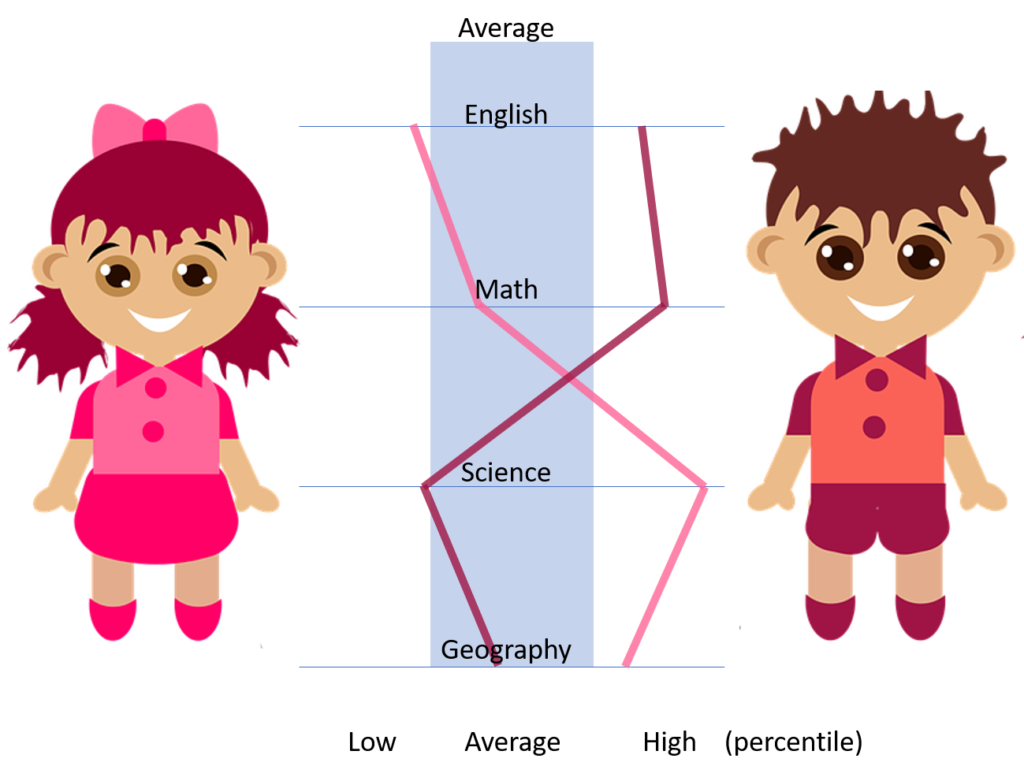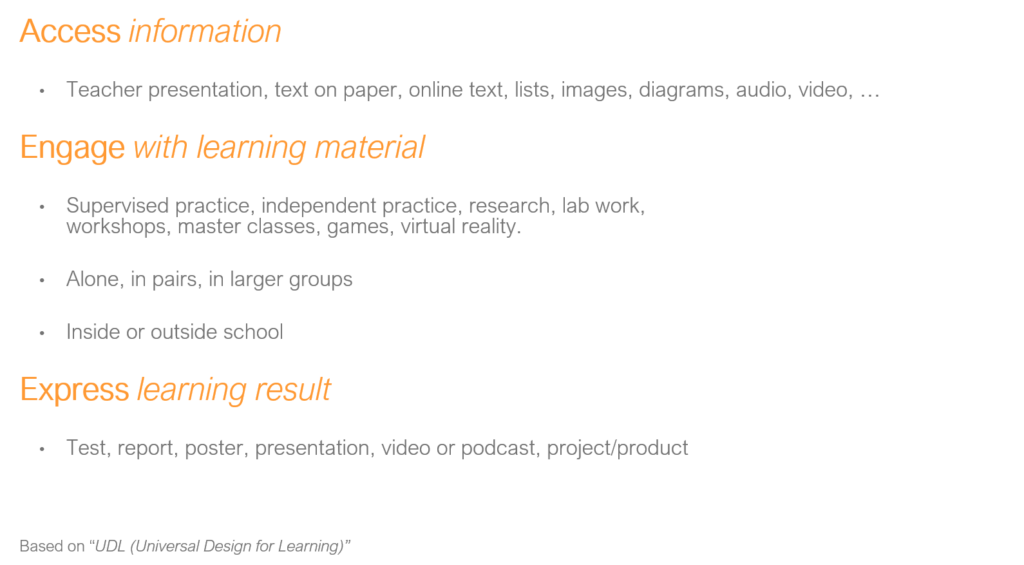The statement that there is no such thing as the average student, is made by Katie Novak in “The Myth of the Average”. This conclusion is important, because there are many situations, both in school and society, where average plays a leading role.

We calculate a weighted or non-weighted average, add disparate student products together, and live under the illusion that we can determine whether a student will pass or has to repeat a whole year based on one decimal. Teachers know each student is different, which is why they prepare lessons with a repeat exercise for one student and some challenging new tasks for another. But we should include the conclusion that the average student does not exist in the design of our lessons, and assume that each child has different skills, needs and interests.
This philosophy is the starting point of UDL: Universal Design for Learning. The term universal design comes from architecture. This term refers to designing buildings in a certain way to guarantee they are easily accessible to all users. The UDL principle makes sure we design our lessons in such a way that they are accessible for all the students we are dealing with.
In the previous blog: “Children do not think in subjects”, we started introducing cross-curricular work. In this blog we will go further and take a look at how we can use UDL for the design of a cross-curriculum project.
A “whole brain” approach
The starting point of UDL is that teaching material is developed according to three basic principles:
- Engagement – the material is in line with the student’s context and intrinsic motivation; this principle is called “challenge and adventure” in our cross-curricular model. Because students are different, we must support multiple contexts.
- Representation – information is offered in different ways, so that the way of communicating information matches different learning preferences
- Action and expression – students have different ways of demonstrating their learning outcomes, so do not only supply standard written tests. The advantage of written tests is that they matches the exam, but you can measure learning outcomes in many different ways.
Research shows that learning materials developed according to these principles are the best way to stimulate students’ brains.
These principles are used in Summario in 3 learning phases: Introduction, Let’s get started, and Prove your knowledge. There are various options for shaping the learning material for each learning phase, both traditional and digital.
The diagram below displays a number of possibilities for each learning phase, always starting with the most traditional. In a very traditional learning situation the teacher explains a theory, then the students start practicing and make a test. They do this by themselves and within the school building. Now all these parts are usable, but this approach to learning will only appeal to a few students.

A cross-curriculum often fits a combination of work forms that could look like this:
- The lessons are offered in a structured way in the learning environment with texts, images, diagrams and a video. The learning material contains links to the Internet where subjects are explained form a different point of view or where in-depth assignments can be found.
- Subsequently, students will start working on assignments related to the subject, alone or in pairs. Sometimes they need additional information, which is why the assignments contain usable search suggestions. Offering the possibility to ask an external expert for help by phone, Skype or e-mail is also a good option.
- The lesson concludes by students presenting their research. This is a very important part of the process, because students can choose the roles their prefer, while being coached by their teacher. This way each student can present his or her learning result in the best way possible.
As you can see, a cross-curriculum set up like this, offers different options for each type of learning activity. More about the different types of learning activities, the possibilities you should offer and ways to keep this method of designing learning materials manageable, will be explained in the next blog: “Who are we doing it for?”.
Recommended literature
Loui Lord Nelson – Design and Deliver– Brookes Publishing Co, 2014
Todd Rose – The End of Average – Harperone, 2016
More articles on cross-curricular work will be published in the coming weeks. Throughout these articles we will show you examples of how you can approach cross-curricular work using Summario.

Leave a Reply